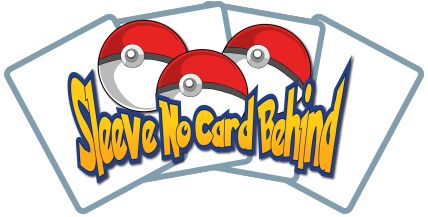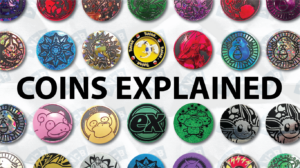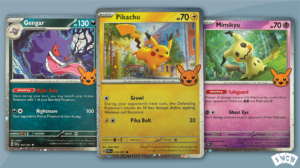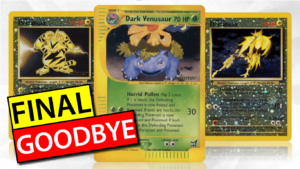-
By: Davi Braid
- Published:
- Last Updated: December 3, 2023
The Main Differences Between NA and EU Cards
There are three main differences between European and North American Yu-Gi-Oh! cards:
- Color Tones
- Glossiness
- Secret Rares
European cards are distinguishable from their North American counterparts due to their slightly glossier front.
They also have deeper colors and higher contrast, while NA cards have a more vivid holo effect.
Although this difference can be very subtle, it is enough to make them visually distinct. The difference that is not so subtle is seen in Secret Rares.
North American cards have changed their style for Secret Rares since the Duelist Revolution set, while European cards have maintained their traditional patterns.
Despite these distinctions, it’s worth noting that both versions share the same code, ensuring consistency in their identification.
Moreover, these distinctions were not necessarily planned. Efforts were made to synchronize the European and American TCG markets, but there remained discernible differences between the two.
This is particularly evident between the TCG releases of “Soul of the Duelist” (October 1, 2004) and “Flaming Eternity” (March 1, 2005).
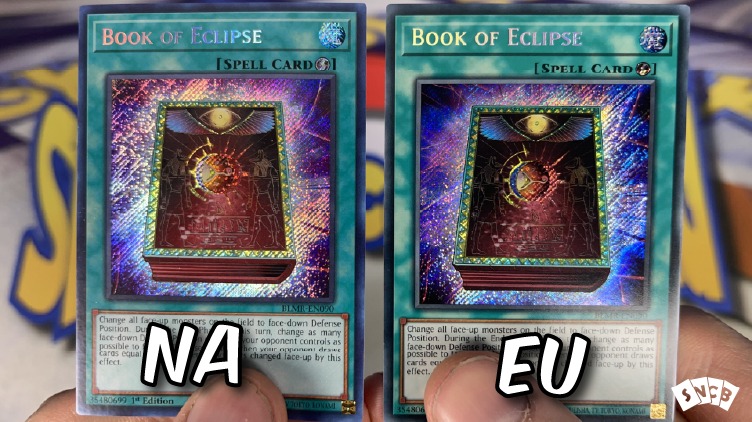
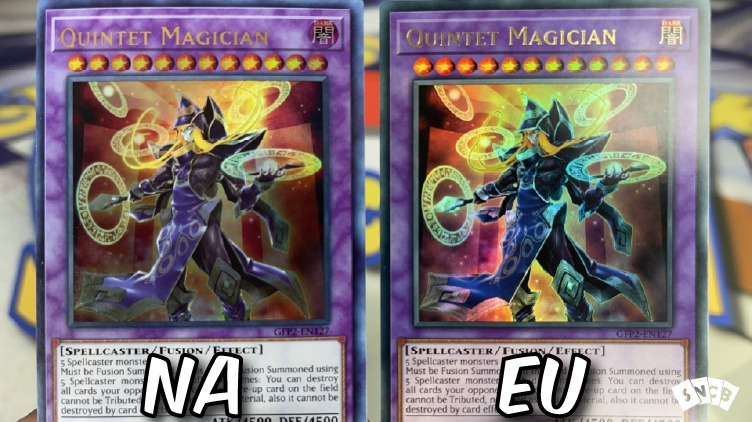
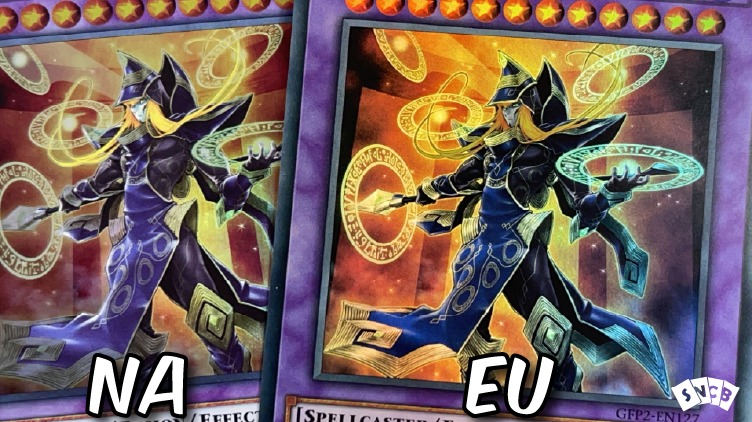
Which Version Is More Desirable?
There’s no denying that the question of which version reigns supreme has been debated for ages. But when it comes down to it, the answer is simple: it’s all a matter of personal taste.
Some enthusiasts advocate for the vivid holo effect seen in American cards, which gives them a shiny and intense appearance.
On the other hand, some argue that the deeper colors and higher contrast of European prints are more appealing.
The contrasting viewpoints only prove that there’s no objective answer.
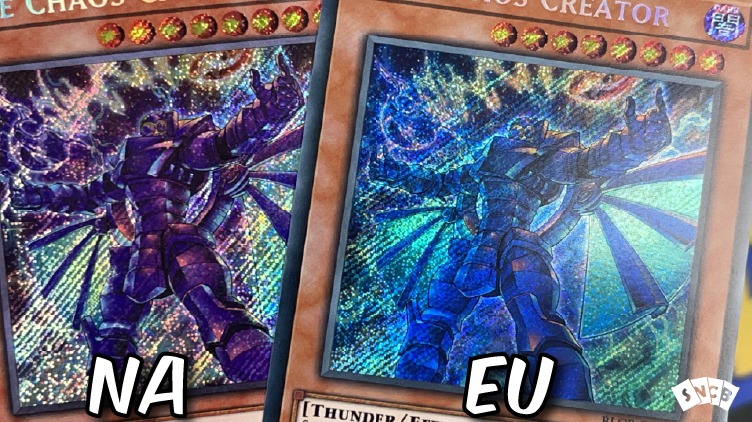
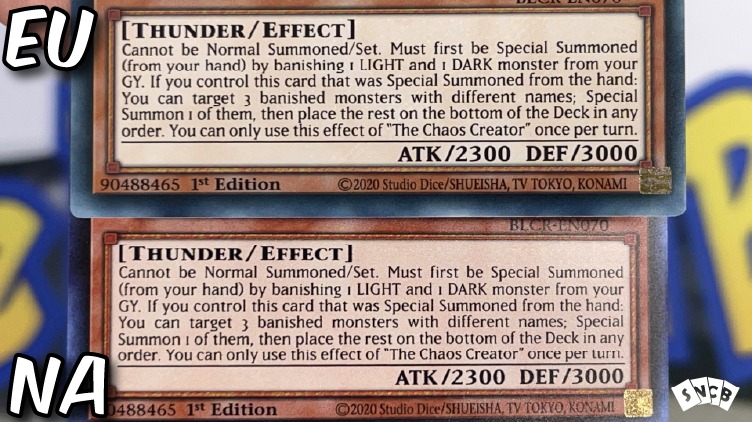
Are Both NA and EU Cards Legal for Tournament Play?
Fortunately, the differences in card prints do not impact their legality for tournament play. In fact, you can even use cards with texts in different languages.
Yu‑Gi‑Oh! TCG cards printed in English, French, Italian, German, Spanish, and Portuguese can all be played in any TCG territory.
The TCG recognizes both North American and European prints, emphasizing that the gameplay remains consistent across continents.
Despite aesthetic disparities, the fundamental rules and regulations of the game remain unchanged, ensuring a level playing field for all enthusiasts.
That said, cards printed in Japanese, Korean, Chinese, or “Asian English” belong to the so-called OCG, or Official Card Game. Yu-Gi-Oh! OCG cards can only be played in Asian territories. They are not legal for use in Yu‑Gi‑Oh! TCG events.
Although the OCG and TCG cards seem to be mechanically identical, these two are not the same game. There are several differences between them, including version-exclusive cards, rules, and bans.
Limiting cards by language simplifies the process compared to using a list of allowed or disallowed cards, making it easier to identify a card’s legality in TCG or OCG territory.
Beware of Fakes
If you’re purchasing a card that appears slightly different from what you expected, it could likely be from another region.
However, there’s also a chance that it isn’t an original product. Discoloration often plagues fake cards, and the saturation disparities between NA and EU prints might initially raise suspicion.
Therefore, it’s always beneficial to understand the differences between original and fake Yu-Gi-Oh! cards. The differences are far more significant than a slight color variation.
To authenticate a card’s legitimacy, make sure to check a picture of the original first. When examining a card’s authenticity, look for anything that looks different.
Fake cards often have spelling errors, different fonts, and slightly different designs. If the stars look different or if a stamp is missing, you’re probably holding a counterfeit.
Another very noticeable characteristic seen in some fake cards is the pointed corners of the cards. Original Yu-Gi-Oh! cards have black borders and rounded corners.
The Value of European and American Cards
The value of cards from different regions used to vary more, but this changed with the introduction of worldwide releases.
The price tags for both types are pretty much on par. When there is a price difference, it’s usually just by a few dollars.
As mentioned above, it’s all about personal taste. Some people like to stand out, which might cause US cards to be worth a little more in Europe and vice versa. The difference in price is rarely significant, though.
Unless we’re talking about some of the first TCG cards printed, this isn’t something that you should worry too much about when buying a card.
In the grand scheme of things, unless you’re determined to build a collection from various regions, it’s probably not worth spending extra on a card that looks almost identical.
Final Thoughts
Although most differences are subtle, you will be able to recognize them once you learn what to look for.
Also, if the differences are noticeable, it’s crucial to check other elements to verify the card’s authenticity.
It’s also worth noting that in the case of the Yu-Gi-Oh! Trading Card Game, the differences between North American and European prints are more likely due to variations in the printers used rather than any significant differences in quality.
With differing opinions across continents, collectors and players often find themselves debating the desirability of each. The discussions often seem to be about how the grass is greener on the other continent.
At the very least, enthusiastic collectors have the option to seek out different variations of each card.
For those looking for a reason to expand their collection, the slight differences in European prints may be more than enough.
That said, having a different-looking card from another region can be cool and all, but it’s not a big deal.
Don’t expect people to be impressed when you show a card released on the same day to the entire TCG region just because yours is slightly more glossy.
